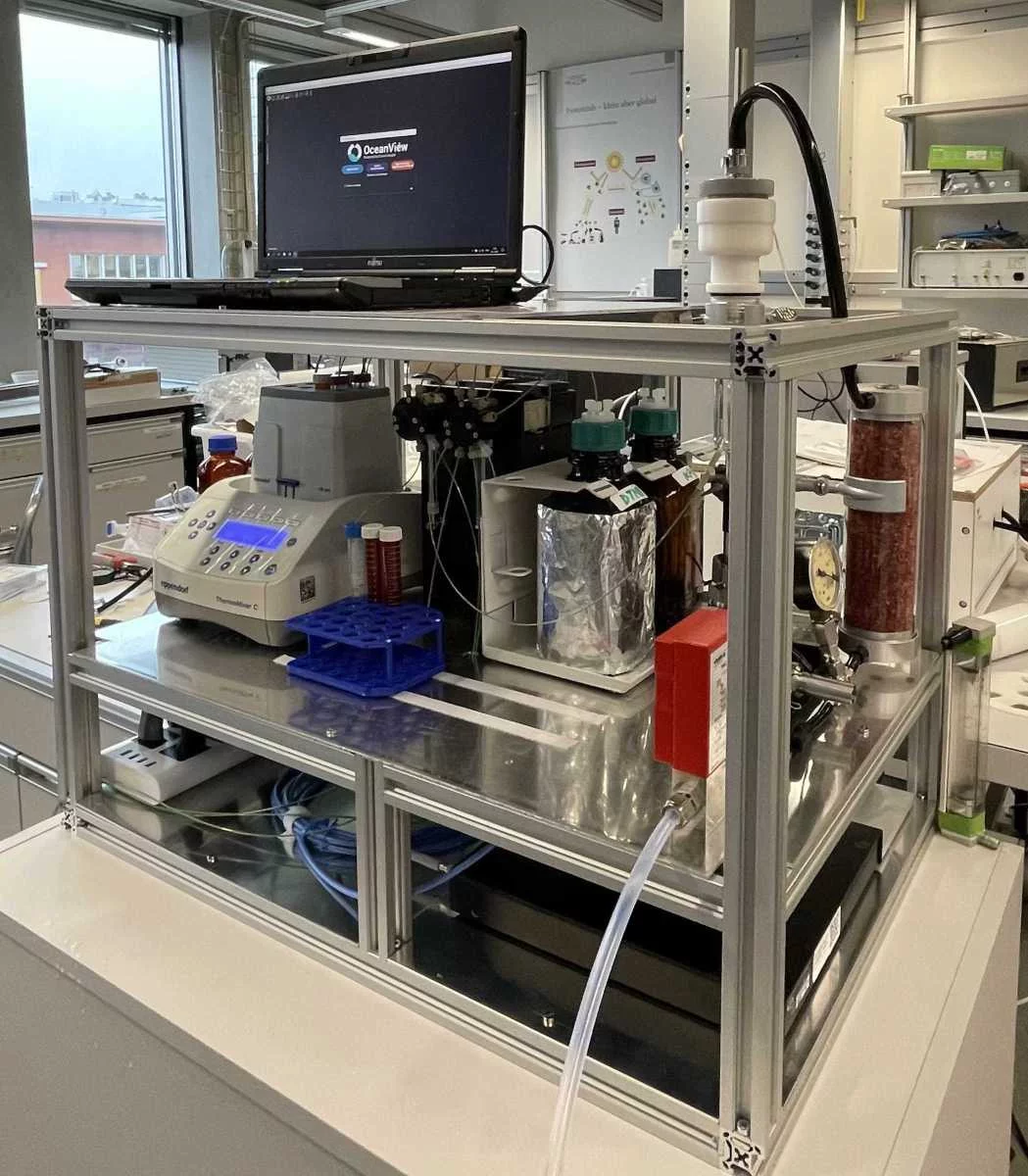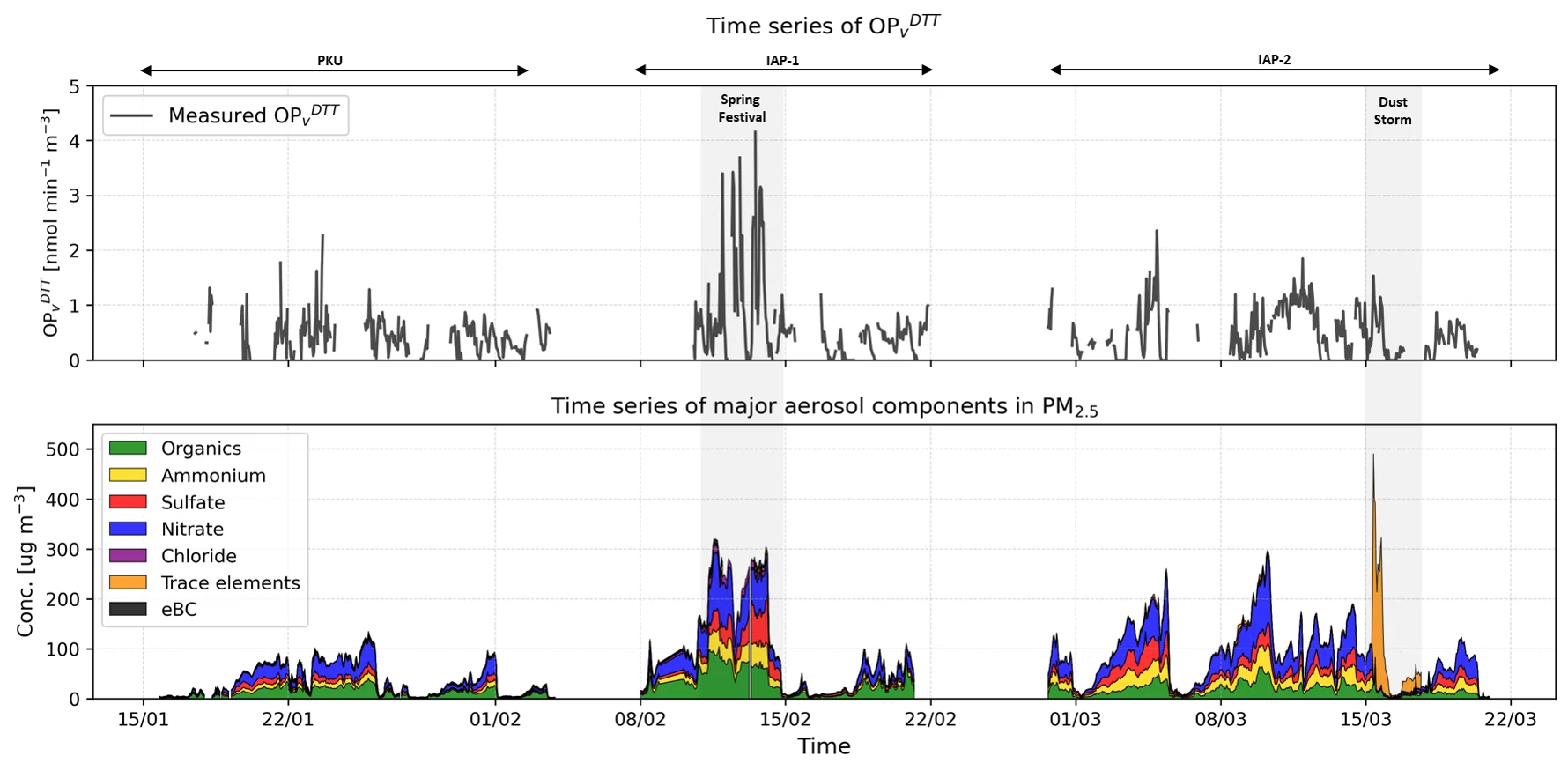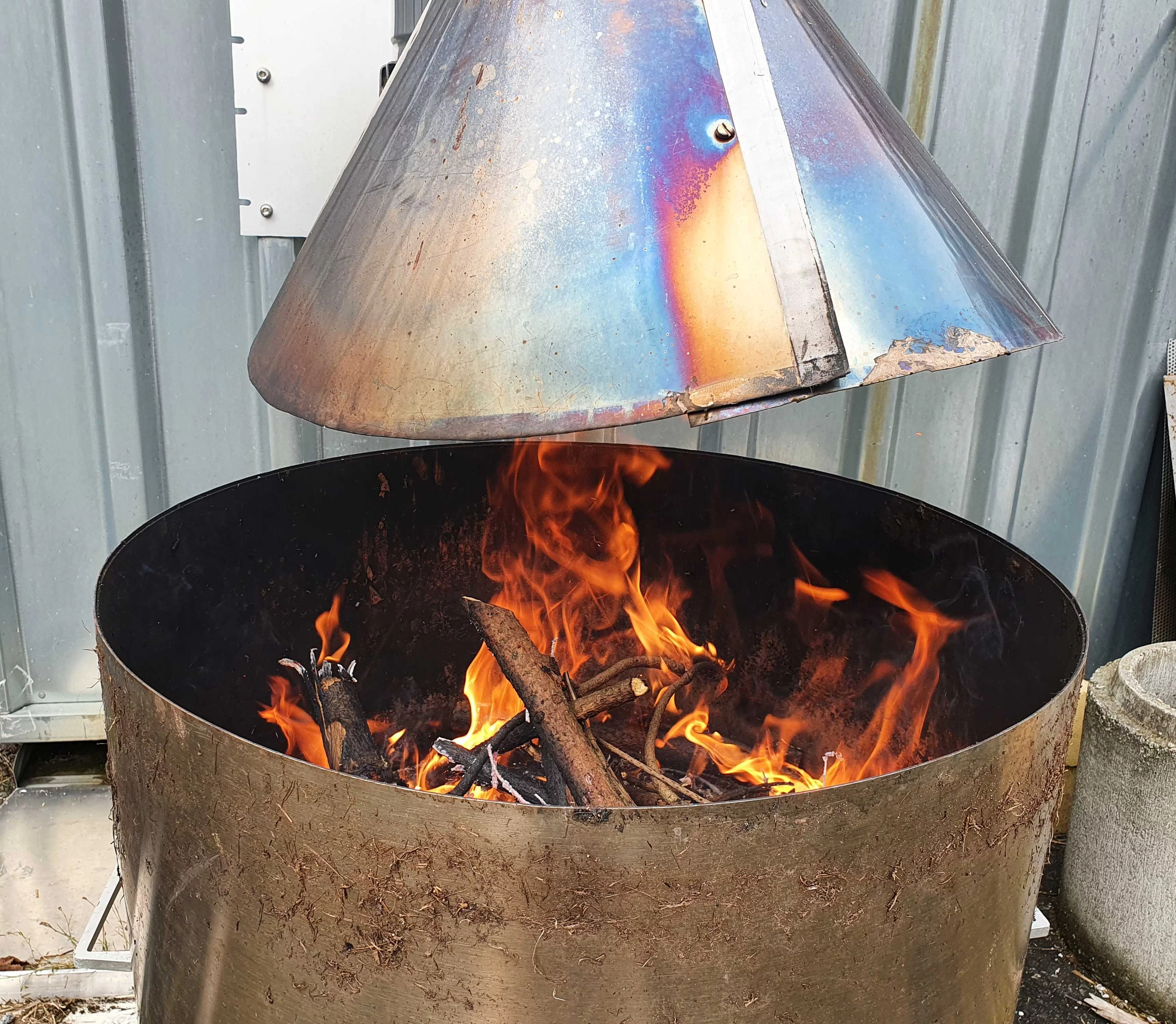Which aerosol components and processes control the toxicity of ambient particulate pollution? Targeted studies of aerosol oxidative potential
Duration: 2020-2024
Funding: Swiss National Science Foundation (SNSF)
Contact: Rob Modini (robin.modini@psi.ch)
Table of Contents
Scope of the Project
Particulate matter air pollution is damaging to human health and responsible for millions of premature deaths each year worldwide. Some types of particulate matter are more toxic for humans than others. The goals of this project are to identify these most toxic aerosol species and to examine how they are formed. To achieve this we have measured the ability of particulate matter to induce oxidative stress within cells (so called aerosol oxidative potential) in near real-time with a new instrument developed for the project. To link these measurements to specific aerosol components, we also made combined measurements of metals, soot and organic aerosol species. The measurements were performed in the polluted megacity of Beijing, China, as well in an atmospheric simulation chamber at the Paul Scherrer Institute. The simulation chamber allowed us to artificially generate many different types of aerosol pollution.
The project is a Sino-Swiss Joint Research Project that benefits from a close collaboration with partners at Peking University in China. The Chinese side of the project is led by Professor Jing Shang.
First Results
Major source categories of aerosol oxidative potential in wintertime Beijing, China
We successfully operated our new instrument for measuring aerosol oxidative potential in wintertime Beijing and surroundings for a period of 2 months in winter 2021. These are the first online dithiothreitol-based field measurements of PM2.5 oxidative potential ever conducted in China. In combination with these measurements we performed a detail characterization of the aerosol chemical composition. The resulting data were analyzed with advanced analytical techniques to link the measurements together and identify major source categories of aerosol oxidative potential. Two major pollution episodes were identified -- one natural (dust storm) and one anthropogenic (spring festival celebrations) -- in order to highlight the differential toxicity of PM2.5. On average over the whole measurement period, both primary PM and aged, oxygenated organic aerosols were found to make substantial contributions to the aerosol oxidative potential.
Effects of atmospheric aging on the oxidative potential of different types of carbonaceous aerosols
Carbonaceous aerosols are emitted directly into the atmosphere from a variety of sources (e.g. combustion processes) or formed from the atmospheric oxidation of biogenic and anthropogenic precursors. Atmospheric aging processes continue to alter the chemical and physical properties of carbonaceous aerosols, thus also influencing their oxidative potential. We have performed over 30 smog chamber experiments in order to measure these changes under a wide variety of simulated atmospheric conditions. Specifically, we measured hourly-resolved oxidative potential as a function of aging for different types of carbonaceous aerosols including residential wood burning, open biomass burning, and coal combustion emissions, as well as alpha-pinene and naphthalene-derived secondary organic aerosols. In combination we also performed detailed measurements of the physical and chemical properties of the aerosols. This large database of measurements is currently being analyzed to quantify and compare the toxicity of the different types of carbonaceous aerosols under different atmospheric ageing scenarios.
Publications
-
Cheung RKY, Zhang J, Wang T, Kattner L, Bogler S, Puthussery JV, et al.
Online measurements during simulated atmospheric aging track the strongly increasing oxidative potential of complex combustion aerosols relative to their primary emissions
Environmental Science and Technology Letters. 2025; 12(1): 64-72. https://doi.org/10.1021/acs.estlett.4c00956
DORA PSI -
Wang T, Zhang J, Lamkaddam H, Li K, Cheung KY, Kattner L, et al.
Chemical characterization of organic vapors from wood, straw, cow dung, and coal burning
Atmospheric Chemistry and Physics. 2025; 25(4): 2707-2724. https://doi.org/10.5194/acp-25-2707-2025
DORA PSI -
Cheng Z, Qiu X, Li A, Chai Q, Shi X, Ge Y, et al.
Heterogeneous reactions significantly contribute to the atmospheric formation of nitrated aromatic compounds during the haze episode in urban Beijing
Science of the Total Environment. 2024; 917: 170612 (7 pp.). https://doi.org/10.1016/j.scitotenv.2024.170612
DORA PSI -
Cheung RKY, Qi L, Manousakas MI, Puthussery JV, Zheng Y, Koenig TK, et al.
Major source categories of PM2.5 oxidative potential in wintertime Beijing and surroundings based on online dithiothreitol-based field measurements
Science of the Total Environment. 2024; 928: 172345 (14 pp.). https://doi.org/10.1016/j.scitotenv.2024.172345
DORA PSI -
El Haddad I, Vienneau D, Daellenbach KR, Modini R, Slowik JG, Upadhyay A, et al.
Opinion: How will advances in aerosol science inform our understanding of the health impacts of outdoor particulate pollution?
Atmospheric Chemistry and Physics. 2024; 24(20): 11981-12011. https://doi.org/10.5194/acp-24-11981-2024
DORA PSI -
Zhang J, Li K, Wang T, Gammelsæter E, Cheung RKY, Surdu M, et al.
Bulk and molecular-level composition of primary organic aerosol from wood, straw, cow dung, and plastic burning
Atmospheric Chemistry and Physics. 2023; 23(22): 14561-14576. https://doi.org/10.5194/acp-23-14561-2023
DORA PSI




